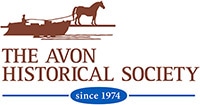Brian D. Jones Paleoindian Site
They uncovered more than 15,000 artifacts that are characteristic of the Early and Middle Paleoindian periods. The site is named for Brian D. Jones, the late Connecticut State Archaeologist, who led the effort to dig deep based on earlier digs in the area over a forty-year period.
Dr. David Leslie, Senior Archaeologist at AHS, published initial findings in the journal PALEOAMERICA, Jan. 2020, entitled “The Brian D. Jones Site (4-10B): A Multi-Component Paleoindian Site in Southern New England.” According to Leslie, this site is located on a deeply buried Pleistocene levee on the Farmington River in Avon, CT. It is the oldest-dated occupied site in Connecticut and the only site in the American Northeast with well-defined stratified Early Paleoindian deposits.
At the first public presentation of the site in February 2020, Dr. Leslie explained this will require multi-year analysis before any conclusions can be written about the site and the early people who worked there. This post-Ice Age site has been fully excavated and the new bridge over the River covers it. According to Dr. Lucianne Lavin, Director of Collections and Research, Institute for American Indian Studies in Washington, CT near a slightly later Paleoindian site, the last Ice Age in this region began to melt away about 17,500BP (Before the Present). As it receded, a lush new land was exposed that provided for animal life to return about 13,500BP in the form of tundra-grazing animals such as mastodons, mammoths, horses, giant beaver, caribou, and more. The ancient communities of the Paleoindians are thought to have begun to arrive in the northeast after that time in search of those animals for food. They were the first settlers of what is now Connecticut and southern New England. (Connecticut’s Indigenous Peoples, by Lucianne Lavin, 2013, Yale University Press)
The Avon Historical Society, Avon Free Public Library, and Avon Senior Center are partnering on a multi-year series of webinars to break down the many facets of this early time in our world’s history. Entitled “Unearthing History: The Discovery of a 12,500-Year-Old Paleo-Indian Site Along the Farmington River in Avon, CT” is available via the Avon Public Library website. At the end of each annual series, Dr. Leslie will present an update on the Brian D. Jones site as well as new theories based on the analysis of the artifacts.
Header photo of the location of the site at the Farmington River courtesy of Howard Wright. Remaining photos courtesy of Archaeological and Historical Services, Storrs, CT.
Articles of Interest
Connecticut Magazine, Jan 5, 2022: "New discoveries are changing what we know of the first people and their world" by Janet Reynolds
Today Magazine, Oct 28, 2021: "Can You Dig It: Internationally significant find in Valley" by Dr. David Lesley
Today Magazine, Oct 6, 2021: "Paleo-Indian Cover Story" by Dr. David Lesley


2024 Virtual Series
Watch These Previously Record 2024 Virtual Lectures
Lecture #1: The History of Archaeology in CT with Emphasis on Native Americans
Lecture #2: Bioarchaeology in North America Ethics, Issues and Where the Field Stands
Lecture #3: Foraging in the Paleoindian Period
Lecture #4: TBD
Lecture #5: TBD
2023 Virtual Series
Watch These Previously Record 2023 Virtual Lectures
Lecture #1: The LIDAR Revolution in Earth Surface Mapping
Lecture #2: Hunting Techniques of the Paleo-Indian
Lecture #3: The Big Importance of Small Things: Microscopic and Blood Residue Analysis of Ancient Stone Tools
Lecture #4: Paleo-Indian Sites, Site Patterning and Travel Corridors along the Southern Arm of the Champlain Sea
Lecture #5: Update on the Brian D. Jones site in Avon, CT since discovery in 2019
2022 Virtual Presentations
Watch These Previously Recorded 2022 Presentations
- Event #1, Thursday, March 10, 7:00 PM: What Genetics Teaches Us About the Peopling of North America
- Event # 2, Thursday, April 7, 7:00 PM: Ice Age Animals of New England
- Event #3, Thursday, May 12, 7:00 PM: Paleoindian Peoples in the Northeast: Survival in the Ice Age and After
- Event #4: Thursday, September 15, 7:00 PM: Looking into the past with Ancient DNA
- Event #5: Thursday, October 13, 7:00 PM: Update on the Scientific Analysis of the Brian D. Jones site in Avon, CT Since its Discovery in 2019
2021 Virtual Presentations
Watch These Previously Recorded Presentations
Virtual Lecture #5: Connecticut's Paleo-Indian Sites
Virtual Lecture #4 : Connecticut Native American Communities Past and Present
Virtual Lecture #3: Connecticut Before History; The Deep Story of Human Settlement of the Farmington Valley
Virtual Lecture #2: A Rift, not the River, made the Farmington Valley
Virtual Lecture #1: Digging into Deep History: Archaeology, Artifacts, and Avocation



